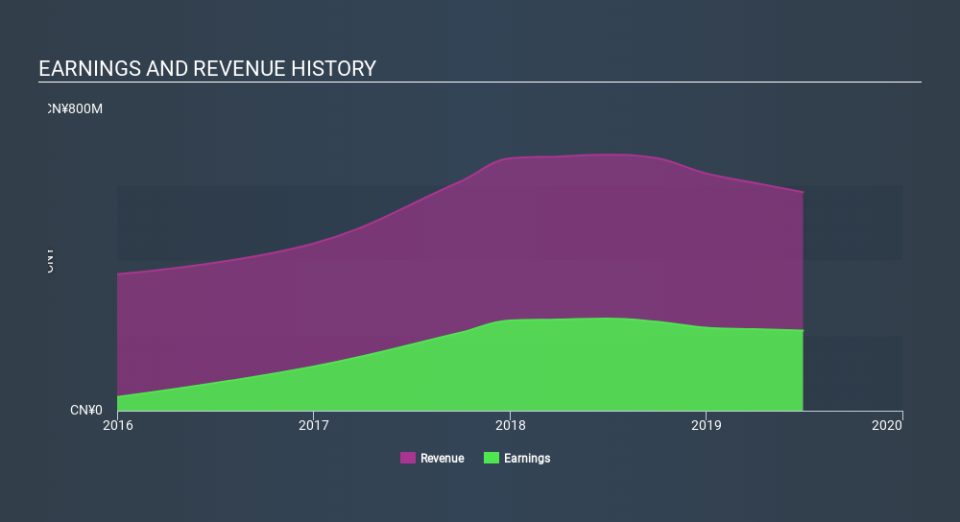Does Zhejiang Cangnan Instrument Group's (HKG:1743) Share Price Gain of 20% Match Its Business Performance?

Passive investing in index funds can generate returns that roughly match the overall market. But investors can boost returns by picking market-beating companies to own shares in. To wit, the Zhejiang Cangnan Instrument Group Company Limited (HKG:1743) share price is 20% higher than it was a year ago, much better than the market return of around 12% (not including dividends) in the same period. That's a solid performance by our standards! We'll need to follow Zhejiang Cangnan Instrument Group for a while to get a better sense of its share price trend, since it hasn't been listed for particularly long.
See our latest analysis for Zhejiang Cangnan Instrument Group
To quote Buffett, 'Ships will sail around the world but the Flat Earth Society will flourish. There will continue to be wide discrepancies between price and value in the marketplace...' One flawed but reasonable way to assess how sentiment around a company has changed is to compare the earnings per share (EPS) with the share price.
Over the last twelve months, Zhejiang Cangnan Instrument Group actually shrank its EPS by 25%.
Given the share price gain, we doubt the market is measuring progress with EPS. Indeed, when EPS is declining but the share price is up, it often means the market is considering other factors.
We haven't seen Zhejiang Cangnan Instrument Group increase dividend payments yet, so the yield probably hasn't helped drive the share higher. It saw it's revenue decline by 15% over twelve months. It's fair to say we're a little surprised to see the share price up, and that makes us cautious.
The image below shows how earnings and revenue have tracked over time (if you click on the image you can see greater detail).
We like that insiders have been buying shares in the last twelve months. Having said that, most people consider earnings and revenue growth trends to be a more meaningful guide to the business. Before buying or selling a stock, we always recommend a close examination of historic growth trends, available here..
What About Dividends?
When looking at investment returns, it is important to consider the difference between total shareholder return (TSR) and share price return. The TSR incorporates the value of any spin-offs or discounted capital raisings, along with any dividends, based on the assumption that the dividends are reinvested. Arguably, the TSR gives a more comprehensive picture of the return generated by a stock. As it happens, Zhejiang Cangnan Instrument Group's TSR for the last year was 27%, which exceeds the share price return mentioned earlier. This is largely a result of its dividend payments!
A Different Perspective
Zhejiang Cangnan Instrument Group shareholders should be happy with the total gain of 27% over the last twelve months , including dividends . And the share price momentum remains respectable, with a gain of 24% in the last three months. Demand for the stock from multiple parties is pushing the price higher; it could be that word is getting out about its virtues as a business. It is all well and good that insiders have been buying shares, but we suggest you check here to see what price insiders were buying at.
If you like to buy stocks alongside management, then you might just love this free list of companies. (Hint: insiders have been buying them).
Please note, the market returns quoted in this article reflect the market weighted average returns of stocks that currently trade on HK exchanges.
If you spot an error that warrants correction, please contact the editor at editorial-team@simplywallst.com. This article by Simply Wall St is general in nature. It does not constitute a recommendation to buy or sell any stock, and does not take account of your objectives, or your financial situation. Simply Wall St has no position in the stocks mentioned.
We aim to bring you long-term focused research analysis driven by fundamental data. Note that our analysis may not factor in the latest price-sensitive company announcements or qualitative material. Thank you for reading.


